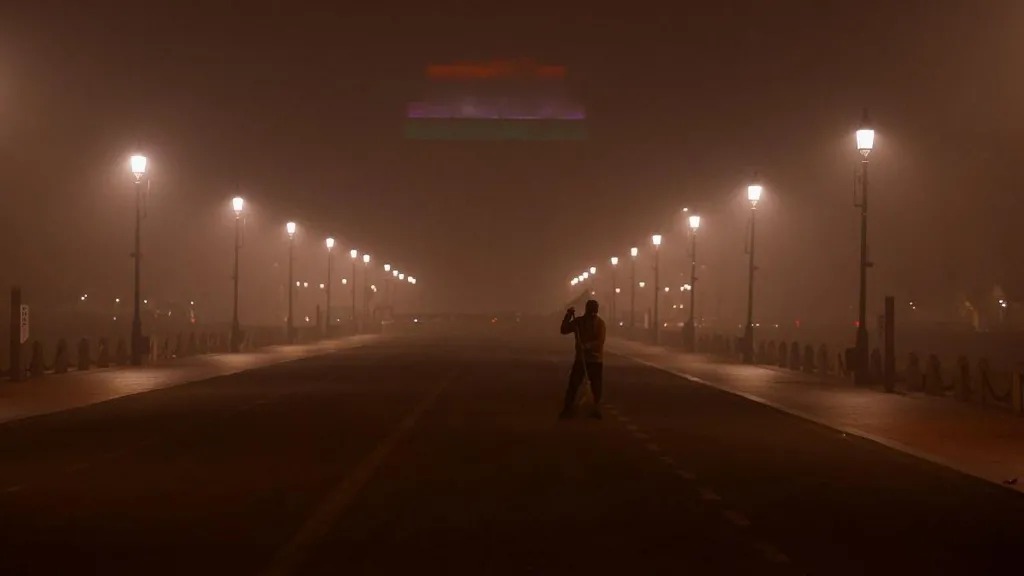
What Is Causing Delhi’s Pollution Crisis?
Seasonal Air Quality Decline
Every year, Delhi and northern India face hazardous air from October to January due to a combination of factors, including:
- Crop stubble burning in nearby states like Haryana, Uttar Pradesh, and Bihar.
- Vehicular emissions and industrial pollutants.
- Low wind speed and cooler temperatures, which trap pollutants.
Political Blame Game
Delhi’s Chief Minister Atishi has accused the central government of failing to curb stubble burning, while the ruling BJP blames the city’s administration for ineffective pollution control.
How Severe Is Delhi’s Air Pollution?
Severe Plus Levels
Delhi’s pollution control authority has classified the city’s air as “severe plus,” with AQI values exceeding 450, according to Indian measurements. Monitors from IQAir reported levels reaching 1,500—well beyond the WHO’s threshold for hazardous air, which is 300.
Health Emergency
The toxic air poses significant health risks, with residents reporting symptoms such as painful throats and respiratory distress. One resident described the situation as living in a “gas chamber,” while others called for mass protests.
What Measures Have Been Taken to Combat the Crisis?
Government Interventions
Authorities have implemented a range of emergency measures, including:
- School closures to protect children.
- Construction bans to limit dust.
- Work-from-home mandates for 50% of office workers.
- Restrictions on non-essential trucks entering the city.
- Ban on coal, firewood, and diesel generators for non-emergency use.
Despite these actions, pollution levels remain dangerously high, and experts warn that stricter measures may be needed.
How Does This Compare Globally?
Delhi is not alone in facing hazardous air pollution. Neighboring Lahore, Pakistan, recorded AQI levels exceeding 1,000 just weeks earlier. The annual winter smog crisis affects millions across South Asia, highlighting the region’s shared challenges in tackling air quality.
What Needs to Change?
Long-Term Solutions
While seasonal measures help temporarily, long-term strategies are essential, such as:
- Enforcing stricter penalties for stubble burning.
- Promoting clean energy alternatives to coal and diesel.
- Enhancing public transportation to reduce vehicle emissions.
- Upgrading air quality monitoring systems to better track and address pollution sources.
Citizen Awareness and Action
Public pressure is growing, with calls for protests to demand more decisive action. Citizens are urging both state and national governments to prioritize air quality improvements for the health and safety of future generations.
Conclusion: Addressing Delhi’s Air Pollution Emergency
The Delhi air pollution severe levels crisis highlights the urgent need for collective action from governments, industries, and residents. While emergency measures offer temporary relief, addressing the root causes of pollution is critical for ensuring cleaner air in the long term.
As residents struggle to breathe, the stakes have never been higher for policymakers to act decisively and tackle the environmental and health crisis plaguing Delhi and northern India.
External Link: BBC
Internal Link: Kenkou Land





